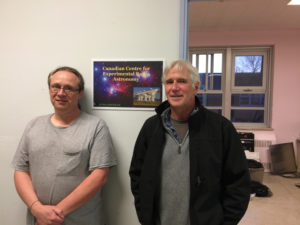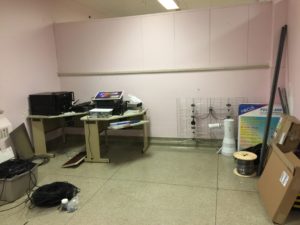This is a small stack of back-end, SDR (Software Defined Radio) receivers, including both Ettus Research USRPs, and AirSpy R2 receivers.
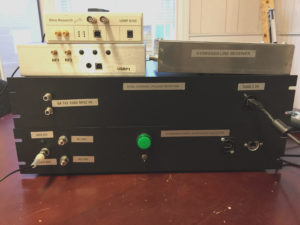
Here’s a look inside the “guts” of our main pulsar receiver
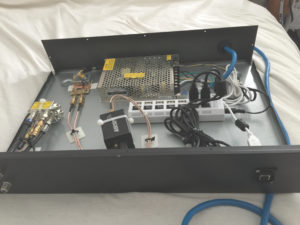
Here are two of the dishes we’ll be using–1.2m offset-parabolic which will be used at 4.2GHz
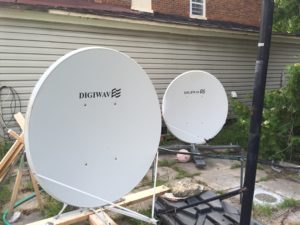
We’ll have another 4 dishes installed by the spring, twice the diameter, and thus 4 times the area.
We’ll also have arrays of fairly-ordinary HDTV antenna for an interferometer at 408 and 610MHz, as well as a pulsar monitoring system for monitoring pulsar B0329+54 this pulsar is the brightest in the northern hemisphere, which allows use of quite-modest antennae to receive its wideband pulses, at a uncorrected pulse rate of 1.3995409505Hz.
We’ll be using the techniques of interferometry to map bright sources in the sky at 4.2GHz, 408Mhz and 610MHz.










